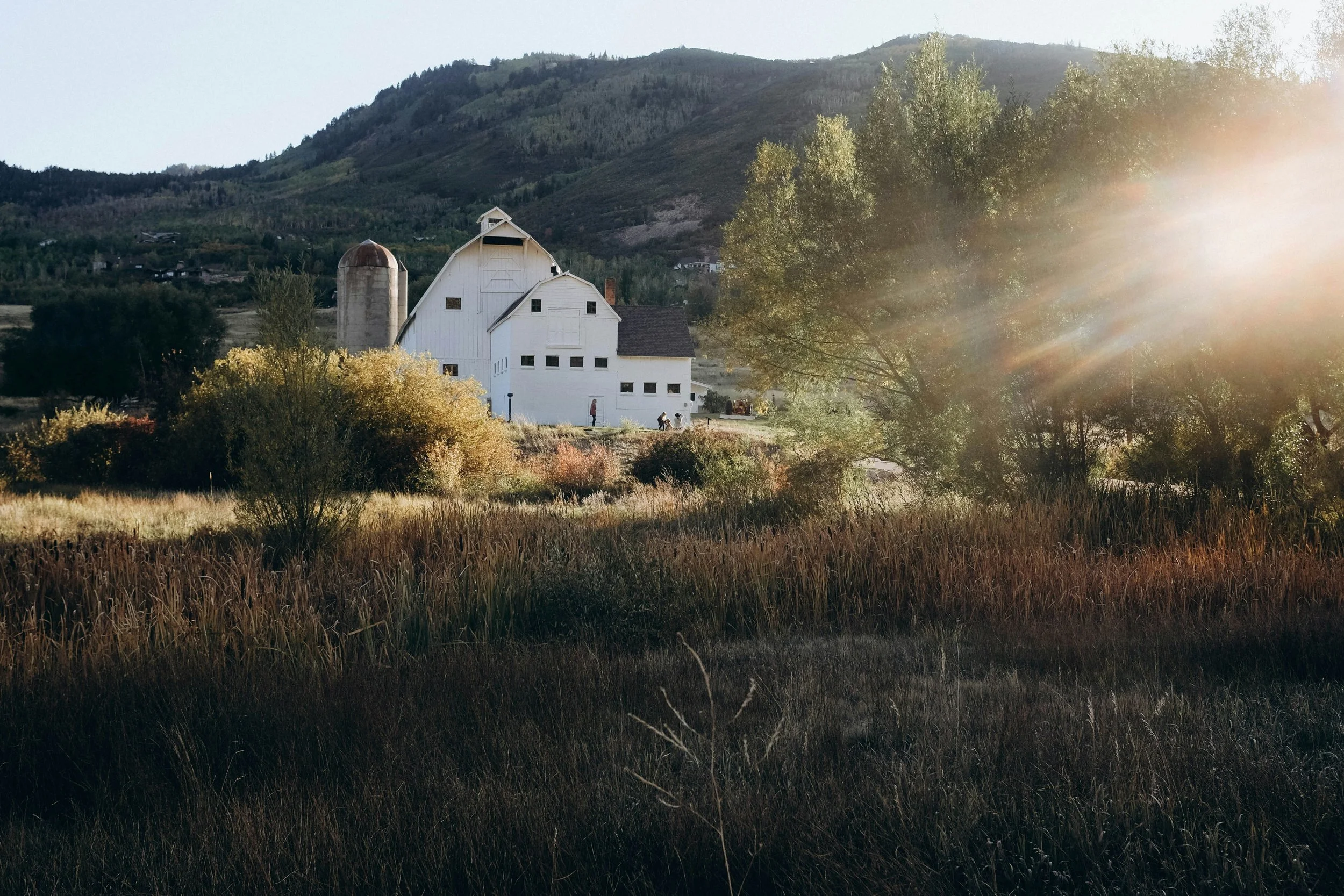Park City
Then & Now

At a Glance
Located in Summit County, Utah
Area: 1, 882 square miles
Founded in 1854
Main industries are tourism and recreation
Elevation 7,000 feet
Miles of trails: 400
Skiable acres: 13,026
Population: 8,380 (2024 survey)
Average Sold Price/SF*: $977.50
Average Sold Home Price*: $2,581,895
Summit County School District
*(Includes Park City Proper and Snyderville Basin areas)
Central Casting
Home to the annual Sundance Film Festival for 40 years
Official Venue City of the 2002 Olympic Winter Games and Paralympic Winter Games with events hosted at both Deer Valley Resort and Park City Mountain Resort, as well as Utah Olympic Park
Park City will take the stage once again with official competitions scheduled for the 2034 Olympic Winter Games
Residence of hundreds of the top Olympic Winter athletes
Celebrities including Katherine Heigl, Lisa Kudrow, Tony Danza, Taylor Swift, Michael Jordan, and Scott Wolfe are among the many Hollywood icons of stage and screen to have homes and close ties to Park City.
Tiger Woods will be presenting his first signature 18-hole championship golf course at Marcella Club, located near Park City in 2025
A long time Hollywood choice for major television and movie productions including Yellowstone, High School Musical, Footloose, Wind River, Indiana Jones and the Last Crusade, The Lone Ranger, among many others

Looking back…
From its humble roots in the 1800s as a silver mining town which attracted prospectors from all over the world to a thriving resort destination which has earned international acclaim as one of the top destinations for outdoor enthusiasts, the charming mountain town of Park City, Utah has truly evolved from a mining boomtown into a world-renowned ski resort and cultural hub, and continues to earn national accolades as one of the best places to live, work and play.
Long before Park City became a world-class mountain resort and venue for the 2002 Olympic Winter Games, it was famous as a silver mining town and boasts a lively and colorful past. Park City was discovered in 1868 when soldiers stationed in Salt Lake City traversed the mountain from Big Cottonwood Canyon to find silver. The completion of the Transcontinental Railroad in 1870 brought hopeful miners by the droves to Utah with their eyes set on becoming rich overnight. The discovery of exceedingly rich silver ore brought George Hearst, the father of William Randolph Hearst, to Park City. His Ontario Mine, purchased for $30,000, produced over $50 million in its lifetime.
In 1884 Park City was incorporated and by 1889 the town's population was over 5,000. Modern conveniences like electricity and running water made Park City one of the most sought-after mining towns in the West and by 1898 the population in town reached 7,500, a number not far from today’s current full-time residency. 1898 also brought tragedy to most of the town when 200 of the 350 structures, homes, and businesses burned in one of the worst fires reported in the state. ¾ of the town was destroyed, 500 made homeless, and $1 million in property lost, but the locals rallied and rebuilt the town in one and a half years. Many of the new buildings are more substantial, built of brick and stone to withstand fire.
By 1930, the idea of skiing had begun to catch on with the installment of a ski jump built on the Creole mine dump. Downhill skiers were few and skiing was mostly a spectator sport. But interest in the trend of winter recreation continued to peak throughout the next few decades, and by 1946 the first lift was installed at Snow Park (now Deer Valley). At the same time, mining prices continue to drop and by 1949 many mines had shut down, putting 1,200 miners out of work.
1951 was a dismal year for what had been for many decades a booming mine town and Park City saw itself becoming a Ghost Town with a population now reduced to 1,150 people. The city existed meagerly until 1963 when Park City qualified for a federal loan from the Federal Area Redevelopment Agency. With government assistance and other contributions, the new ski resort Treasure Mountain Resort opened with a gondola, a chairlift and 2 J-bars. As word of the new ski area spread, people started moving back to Park City. In 1966 Sports Illustrated included Treasure Mountain Resort's PayDay run among the finest ski runs in the country. In addition to skiing, other cultural interests took hold in Park City and in 1970, the first Park City Art Festival debuted on Main Street. But Park City’s mining roots had been pulled for good, and despite a rally in the early 1980s, mining ore disappeared in 1982, to be replaced with the novelty of mining water from the numerous surviving drain tunnels. In 1981, Deer Valley Resort opened and the United States Film and Video Festival, highlighting independent films, opened in January. The festival has since become the Sundance Film Festival and, in 2026, is celebrating its 45th and final year in Park City, after making the decision to move to Boulder, Colorado in 2027.
Winter recreation continued to grow at an exponential rate and by 1990 skier days for the three local ski areas were over 850,000. In 1995 Salt Lake City was awarded the 2002 Winter Olympic Games. More than 40% of the events were held in Park City at the Utah Olympic Park, Deer Valley, and Park City Mountain Resort and the event brought international fame to Park City, whose population and development has continued to grow as a result.
Fast Forward
In 2013, Vail Resorts purchased Canyons Resort and the following year they purchased Park City Mountain Resort. In 2015, they spent $50 million in improvements, one being the installation of a gondola to connect the two resorts into one resort and therefore creating the largest ski resort in the United States and retaining the name of Park City Mountain Resort
Today, the two Park City resorts offer a combined total of over 13,000 acres of skiable terrain, 587 trails and 78 lifts. The convenience of so much of the West's finest ski terrain, convenient lodging and nightlife attracted many of the venues during the 2002 Olympic Winter Games and transformed Park City into a star on the world tourism stage. It has become a year-round recreational haven and an ideal summer destination for golfing, horseback riding, fly-fishing, mountain biking, hiking, and rafting.
Park City enjoys one of the most diverse and fastest growing communities in the state. The appeal of clean air, year-round recreation, the best school districts in the state and the proximity to an international airport just 30 minutes away continues to be why so many flock to Summit to the historic mining community. In 2020, the Covid-19 phenomena created another mass exodus from around the country to our mountain paradise and drew thousands of new residents and visitors to escape the more crowded metropolitan areas across the country. In continues to receive international acclaim annually as one of the best destination towns to live, work and play.
For more demographic information on Summit County, click here.

Summit and Wasatch County Ski Areas
All Utah Resorts:
Ski Utah

EVENTS
Park Silly Sunday Market
Park City Public Schools
Elementary (K-5)
McPolin Elementary
Trailside Elementary
Parley’s Park Elementary
Jeremy Ranch Elementary

Like what you see?
Find local properties for sale in Park City

















